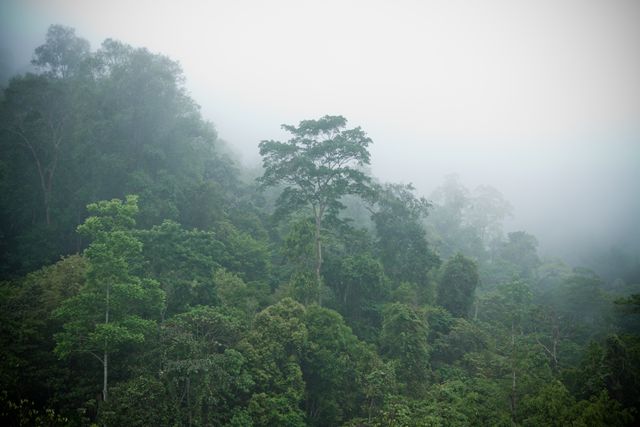The tropics are renowned for their spectacular biodiversity. It has long been puzzling why species richness varies significantly between different tropical regions. For instance, tropical forests in the Americas and Asia typically harbor more tree species than those in Africa. Traditional explanations have attributed these differences to distinct biogeographic histories and evolutionary processes on each continent.
In a study published in National Science Review, an international team of researchers from Xishuangbanna Tropical Botanical Garden (XTBG) of the Chinese Academy of Sciences and their collaborators revealed that contemporary climate and environment, not deep biogeographic history, are the primary drivers of local-scale tree diversity. Despite major differences in geological history, climate evolution, and species pool composition among continents, their tree diversity responds to environmental factors in a highly consistent manner.
By integrating data from 429 one-hectare forest plots spanning the world’s tropical regions, the researchers built a comprehensive dataset representing major tropical biomes. They employed advanced analytical methods, including random forest models accounting for spatial autocorrelation, generalized linear models, and sensitivity experiments, to analyze the drivers of local species richness (also known as alpha diversity).
The model incorporated 24 environmental variables related to climate, soil, and topography, successfully explaining around 86% of variation in local species richness.The results demonstrated that the relationship between environmental conditions and tree species richness was nearly identical across continents.
They found a clear pattern of environmental drivers. Water availability emerged as the most critical factor influencing tree alpha diversity, while soil properties played an equally significant regulatory role at the local scale. Further analysis showed that tropical tree diversity was shaped by the synergistic action of multiple environmental dimensions rather than being controlled by a single factor. This explains why regions with optimal conditions for water, heat, and soil, such as the Amazon basin, develop forests with the highest tree diversity on Earth.
“Our study underscores the pervasive and consistent role of niche-based mechanisms in structuring local tree diversity. It shows a tight and predictable relationship between environment and diversity, providing strong empirical support for the niche theory, which emphasizes mechanisms such as environmental filtering and resource complementarity,” said Dr. LI Shufeng of XTBG.

Tropical forest in Xishuangbanna, China (Image by XTBG)
PUblished: 29 October 2025

